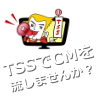TSS-TV’s English-subtitled feature segment Black Rain: A ,hibakusha and a High Schooler put Memories onto Canvas to be shown at Myth of Tomorrow: Conveying the Atomic Bombing Through Art to the Next Generation, a special exhibit commemorating 80 years since the end of WWII at the Taro Okamoto Museum of Art, Kawasaki
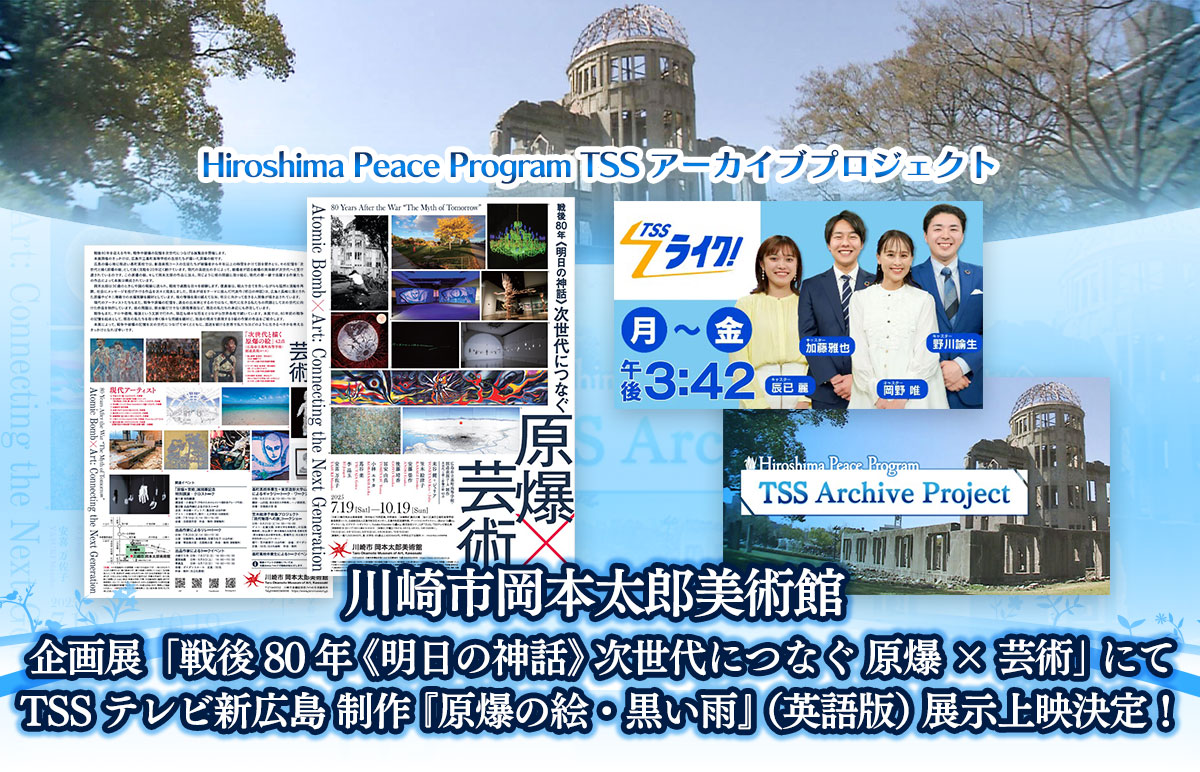
From July 19 (Sat) to October 19 (Sun), 2025, the Taro Okamoto Museum of Art, Kawasaki (Kanagawa Prefecture), home to works by famed Japanese artist Taro Okamoto, will hold a special exhibit commemorating 80 years since the end of WWII entitled Myth of Tomorrow: Conveying the Atomic Bombing Through Art to the Next Generation.
An English-subtitled version of the TSS Like! feature segment Black Rain: A Hibakusha and a High Schooler put Memories onto Canvas, which was broadcast on June 28, 2024, will be shown at the special exhibit. The segment was created by Hiroshima-based broadcast company TSS-TV, which celebrates its 50th anniversary this year.
The special exhibit will feature works of art from contemporary artists that pose questions to the audience about the nuclear issue, war, conflicts, and more. Works include Taro Okamoto’s Myth of Tomorrow and paintings of hibakusha (atomic bomb survivors) memories created over the course of six-months or more by students in Hiroshima Municipal Moto-machi High School’s Creative Expression Course.
Special events will also be held during the course of the exhibit, such as a special talk session by Keiko Ogura (a Hiroshima hibakusha), workshops held by Hiroshima Municipal Moto-machi High School alumni, and other events by artists whose works will be displayed.
Hiroshima Municipal Moto-machi High School’s Creative Expression Course: Painting Scenes from the Atomic Bombing with the Next Generation
TSS Like! feature segment Black Rain: A Hibakusha and a High Schooler put Memories onto Canvas(6’ 26”)

Summary of the feature segment:
A student and hibakusha who volunteered to be a part of the atomic bomb paintings project meet for the first time. This is the first time that hibakusha Isao Sakoda has participated in the project. As a child, he experienced the black rain caused by the atomic bombing. In charge of painting his memory is Anju Mochida, a second-year student at Hiroshima Municipal Moto-machi High School (at the time of filming).
The black rain that fell directly after the atomic bombing of Hiroshima refers to rain containing radioactive materials and soot from the large-scale fires that broke out in the aftermath. Many of the people who were caught in the black rain developed health issues.
The national government designated the black rain heavy rain area, a portion of Hiroshima Prefecture, as an area eligible for national assistance after holding an investigation immediately after the atomic bombing, and those who were in this area directly after the bombing were recognized as hibakusha. In later years, investigations and court hearings were held regarding the question of whether black rain fell more widely than previously recognized. As a result, they expanded the area in which residents could be recognized as hibakusha. With this expansion, Mr. Sakoda was newly recognized as a hibakusha in 2022, 77 years after experiencing the black rain. Stills from the June 28, 2024 TSS Like! broadcast
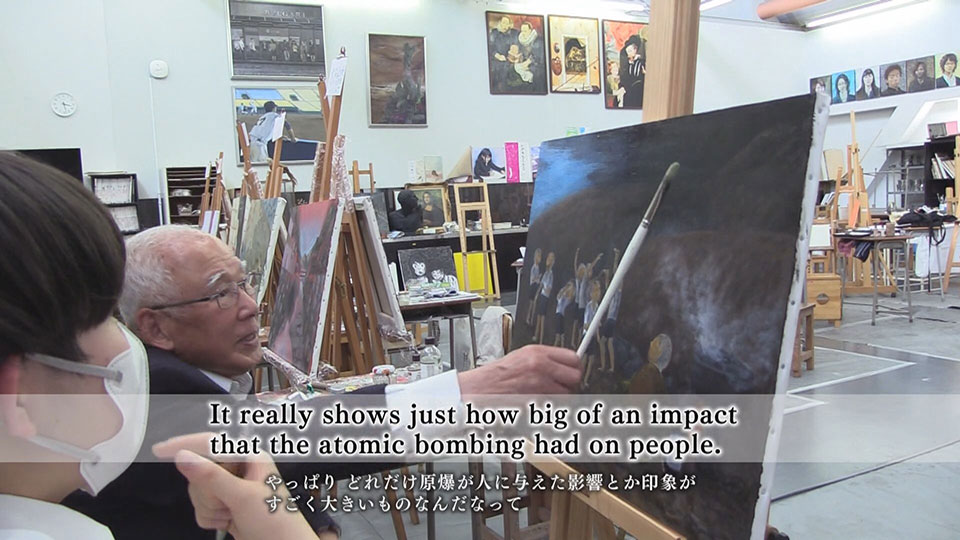
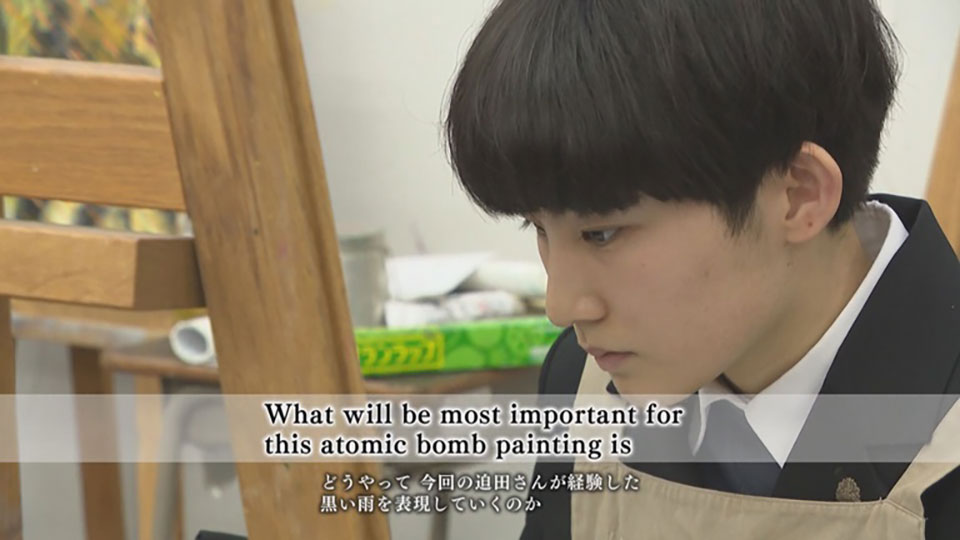
Excerpt from the Myth of Tomorrow: Conveying the Atomic Bombing Through Art to the Next Generation Special Exhibit:
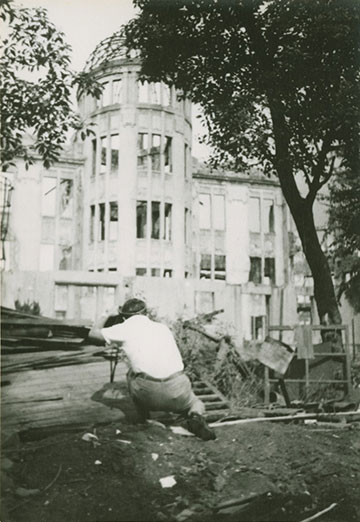
Courtesy of the Taro Okamoto Museum of Art, Kawasaki
We hold this exhibit to convey the memories of war and the atomic bombings in this milestone 80th year since the end of WWII. The inspiration for this exhibit was the atomic bomb paintings created by students at Hiroshima Municipal Moto-machi High School.
Moto-machi High School is located near the hypocenter of the Hiroshima atomic bombing. For nearly 20 years, students in the Creative Expression Course have created atomic bomb paintings, spending more than six months speaking to hibakusha in order to recreate their memories on canvas. These paintings convey the actual experiences of hibakusha to the next generation. This exhibit is made up of these atomic bomb paintings, as well as the works of Taro Okamoto and other artists at the forefront of contemporary art who portray themes such as the nuclear issue.
When Taro Okamoto was 30, he was sent to war in China, where he spent several grueling years. When he returned to Japan, his home and works had been destroyed in an air raid. With renewed enthusiasm, Okamoto began to create art that posed questions to society at large, unveiling new works one after another. One of his best-known works, Myth of Tomorrow, was created on the theme of nuclear weapons, such as the atomic bombings of Hiroshima and Nagasaki and the hydrogen bomb experiment on Bikini Atoll. It features human figures rising to meet the challenges of tomorrow after having overcome the horrors of nuclear weapons.
Contemporary artists create works for the next generation that portray the memories of war and the atomic bombings not as experiences of the past, but as issues that affect us today. The nuclear issue is closer to us today than most think and goes beyond nuclear or hydrogen bombs to disasters at nuclear powerplants and more. War also continues around the world in many forms, from terrorism to invasion to retaliation and beyond. Beginning with the memories of WWII 80 years ago, this exhibit introduces the works of nine artists and groups that express from their own unique perspectives on the various issues that surround us today.
It is our hope that the exhibit will convey the memories of war and the atomic bombings to the next generation, as well as serve as an opportunity for us to consider how to survive in a world of unending turmoil.
Taro Okamoto Museum of Art, Kawasaki


